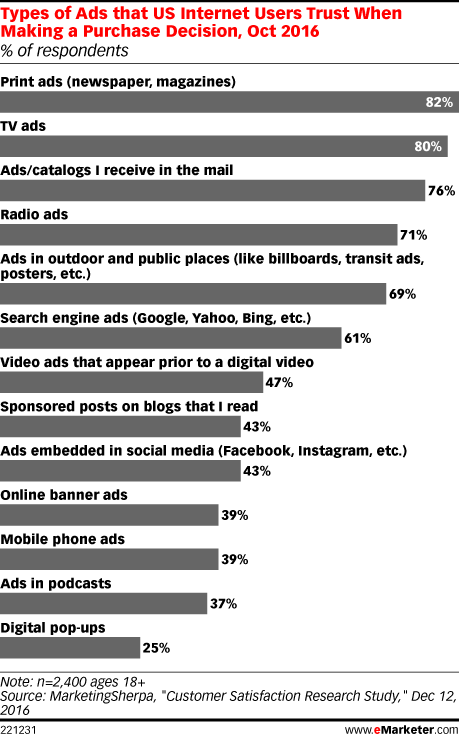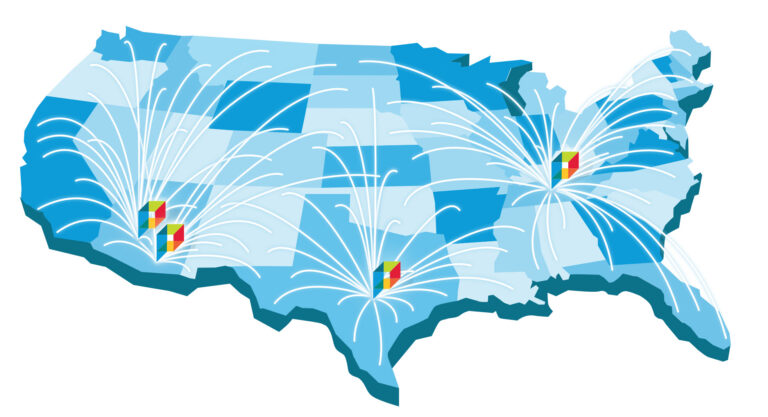Traditional Marketing vs Digital Marketing And How to Best Combine Them
Chances are, your business is already utilizing both traditional marketing and digital marketing. But which is better? Which one should you focus on and why?
Instead of choosing just one, we’ll show you how using both traditional and digital marketing with a strategic plan in place will help increase sales and build awareness for your business.
What is Traditional Marketing, and Why Does it Matter?
Think about the days of Mad Men when print was king. Traditional marketing is the type of work produced in Mad Men, but without all the drama. Basically, traditional marketing is any type of marketing that isn’t online.
Since the ‘60s, traditional marketing has obviously evolved beyond the magazine advertising that Don Draper and his crew were creating. Traditional marketing includes direct mail pieces, broadcast advertising, referral-based marketing, and print materials. It’s anything from radio to billboards to phone calls.
A general thought is that traditional and print marketing are in decline (or even dead already), but a 2016 research study found that 82% of consumers found print marketing to be the most trustworthy type of marketing when making a purchase decision.
Why Traditional Marketing Works (and Why it Sometimes Doesn’t)
Traditional marketing still works. 77% of millennials say they pay attention to direct mail. 59% of US respondents to a 2012 Epsilon study said they enjoy getting mail from brands about new products, and 73% said they prefer direct mail from communications from brand so they can read it at their own convenience.
In addition to the major eyeballs you’re going to get on your content if you send it in the mail, your brand’s awareness can be boosted through local print campaigns, such as newspaper advertising, radio campaigns, and even flyers and coupons to promote your business.
However, there are some downsides to traditional marketing.
The first is that traditional marketing doesn’t allow for any interaction with customers in real time. If customers want more information, they have to seek it out themselves.
In addition, there’s no room for error in traditional marketing. Once an ad or marketing piece is printed and sent out, you can’t change any wrong information. There’s no taking back a misspelled word or a formatting mistake.
Tracking the success of traditional marketing isn’t easy either. You can spend thousands of dollars running a print ad but never know how many people saw it, engaged with it, or bought your product because of it.
What is Digital Marketing?
Hi! You’re currently experiencing digital marketing. Digital marketing is any marketing that utilizes the internet to display or promote products, goods, or services.
Here are some examples of digital or online marketing:
- Search Engine Optimization (SEO)
- Content Marketing
- Social Media Marketing
- Pay Per Click (PPC)
- Affiliate Marketing
- Native Advertising
- Marketing Automation
- Email Marketing
- Online PR
- Inbound Marketing
- Sponsored Content
Why Digital Marketing Works (and Why it Sometimes Doesn’t)
In today’s world, digital marketing is essential for businesses everywhere. Ordering products on Amazon is the new norm. Consumers expect their favorite businesses to have a website that’s frequently updated. Both consumers and businesses are using social networks (even Snapchat!).
Digital marketing has the ability to reach a huge audience in any location with the click of a button. Sometimes that click is even free (hello, social media!). Even if it’s not free, when compared to traditional media, you’re likely going to pay less to advertise online than to go the traditional route, like airing a television commercial.
Tracking is another reason why digital marketing works so well. You can watch as your leads come in from social media or a search campaign and view your website, then analyze what links they click while they’re there, and ultimately see what they purchase and if they return.
There are still drawbacks to digital marketing. The internet can go down and sites can crash. While technologies are usually reliable, there are unexpected times that it just doesn’t work. Of course, a lot of time this happens in the middle of a huge deadline (don’t worry, we’ve all been there).
As technology gets bigger and better, your business also needs to adapt. That means your marketing team needs to spend time doing research on any new rollouts and continually develop strategies to utilize those technologies.
How to Combine Your Print and Digital Messages
Ultimately, you’ll want to be using a combination of both traditional and digital marketing through an omnichannel and multidimensional approach.
Here’s an example: you send a direct mail piece to your mailing list that has a link to lead customers to a page on your website with more information. This not only helps track the success of your direct mail but gives you the opportunity to add helpful information that doesn’t quite fit on a 4×6 postcard, and provides more consistent exposure. It also gives you the choice to nurture your lead further through additional direct mail pieces or follow up through retargeting. Either way, you’ll have insights into which of your customers are interested in your products.
Here’s another idea: say your business offers a monthly magazine or newsletter. Add a link on your website where users can opt-in to receive those in the mail. Once they reach the page and submit their email visitors receive a “cookie” via Google so that your ads connected to the printed piece follow them as they browse other sites.
Typically, you’ll have to do some research and testing on what works best for your industry. Some businesses might be more digital marketing-heavy but would also benefit from using traditional marketing. Most local brick-and-mortar stores would benefit from using traditional marketing but should still have a website and social media.
A great way to integrate direct mail and digital marketing is to send one message through multiple channels to your audience.
For example, let’s say you want to offer your customers 20% off your product. First, send your customers a printed mail piece with the coupon. Then, start showing those same customers an ad on Facebook through SocialMatch and Social Media follow up. Re-engage website visitors by reaching them with multiple impressions on their Facebook & Instagram newsfeeds, and use a tracked phone number to record all calls that come in as a result of your campaign.
Through the integrated marketing strategy, direct mail campaign results can be enhanced by an average of 23-46%. Repetition is key to effective marketing – 80% of sales are made between the 8th and 12th contact.
If you’re considering integrated marketing for your business, click here to watch a short video on how to strategically combine your print and digital marketing with DM360.
















